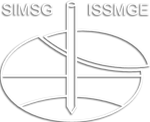APPORT DE L'ENREGISTREMENT DE DONNÉES EN CONTINU POUR L'ESSAI DE CISAILLEMENT EN FORAGE AU PHICOMÈTRE. CONTRIBUTION OF CONTINUOUS DATA RECORDING FOR PHICOMETER BOREHOLE SHEAR TEST.
APPORT DE L'ENREGISTREMENT DE DONNÉES EN CONTINU POUR L'ESSAI DE CISAILLEMENT EN FORAGE AU PHICOMÈTRE. CONTRIBUTION OF CONTINUOUS DATA RECORDING FOR PHICOMETER BOREHOLE SHEAR TEST.
The phicometer invented by Gérard Philipponnat uses an adaptation of the pressuremeter split tube that allows it to perfectly fit the entire wall of a borehole with the same requirements as for prebored pressuremeter probe placement, unlike other techniques for measuring shear in drilling.
On the occasion of the ISO22476-4:2024 standard, it can however be noted that the regular use of the phicometer has not become sufficiently established, many geotechnical calculations are still carried out without measuring the friction angle j, neither in situ nor on a sample. Geotechnical engineers are satisfied with an approximation of the value of j based on the type of soil, possibly its grain size.
Drilling quality and the waiting time between drilling and testing are even more stringent than for pressuremeter testing, and conducting the test requires the coordination of two experienced operators.
For several years, the use of the Geopac, a Type C pressuremeter, has enabled pressure regulation and recording the force of the dynamometric pulling wedge in addition to pressure and volume data. The simultaneous recording of the three measurements, each with greater precision than manual readings and recorded continuously every second, allows for complete quality control.
Examples of tests are shown in two emblematic soil types: sand (Fontainebleau sand) and clay (Beauce decalcification clay). They demonstrate that the simultaneity and precision of the measurements provide a series of twin data ( |) over a wide range, whose alignment is close to a perfect straight line, a finding that validates the quality of the measurement. All that remains for the exegetes is to discuss what type of j represents these experimental data.
Another improvement is in prototype form: the automation of the speed-controlled probe pulling, aiming at fully controlling the test on a site computer by a single operator.
Jean-Pierre Baud; Damien Brechot; Lionel Dare
8th International Symposium on Pressuremeters (ISP2025)
Technological Innovations
